As spring planting shifts into high gear in farmers’ fields...
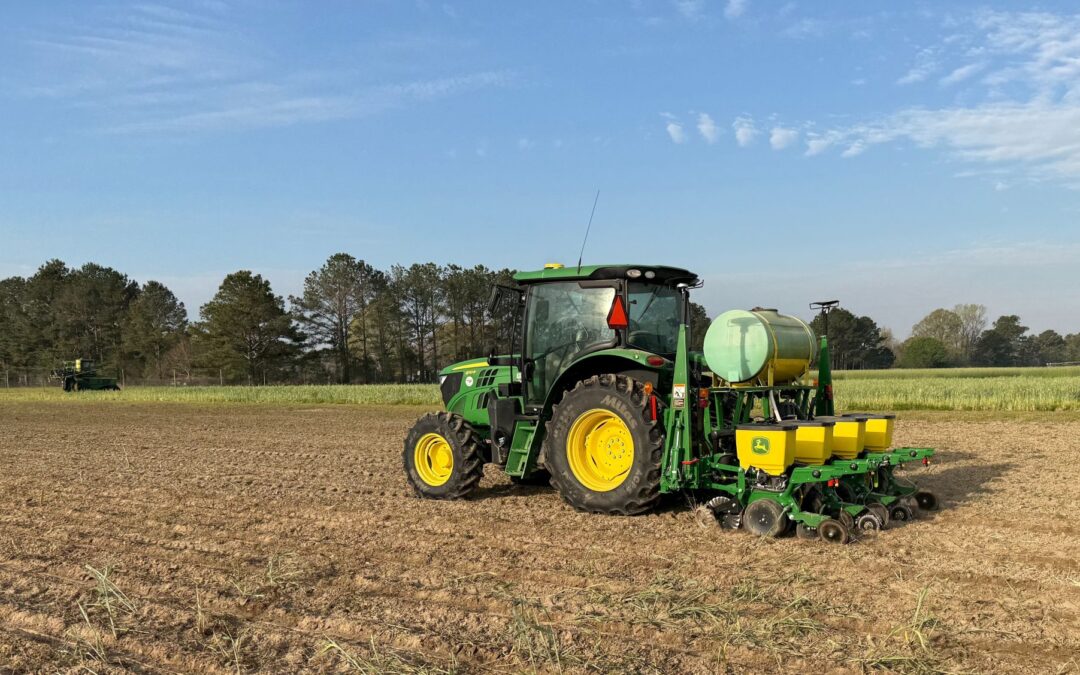

As spring planting shifts into high gear in farmers’ fields...
The line from the classic musical “Oklahoma” that refers to corn being “as high as an elephant’s eye” would not apply to some of the new hybrids becoming available to producers. Reduced-stature corn, also referred to as “short” corn, is a concept that has gained...
By Kelley Young How does a community ensure it has clean water for decades to come? As an outreach project manager with Auburn University’s Water Resources Center (WRC), Laura Cooley knows community involvement in any planning process is paramount. “Planning is...

As a project manager with Auburn’s Water Resource Center, Cooley manages watershed restoration projects and educates communities on how to care for rivers, streams and creeks.
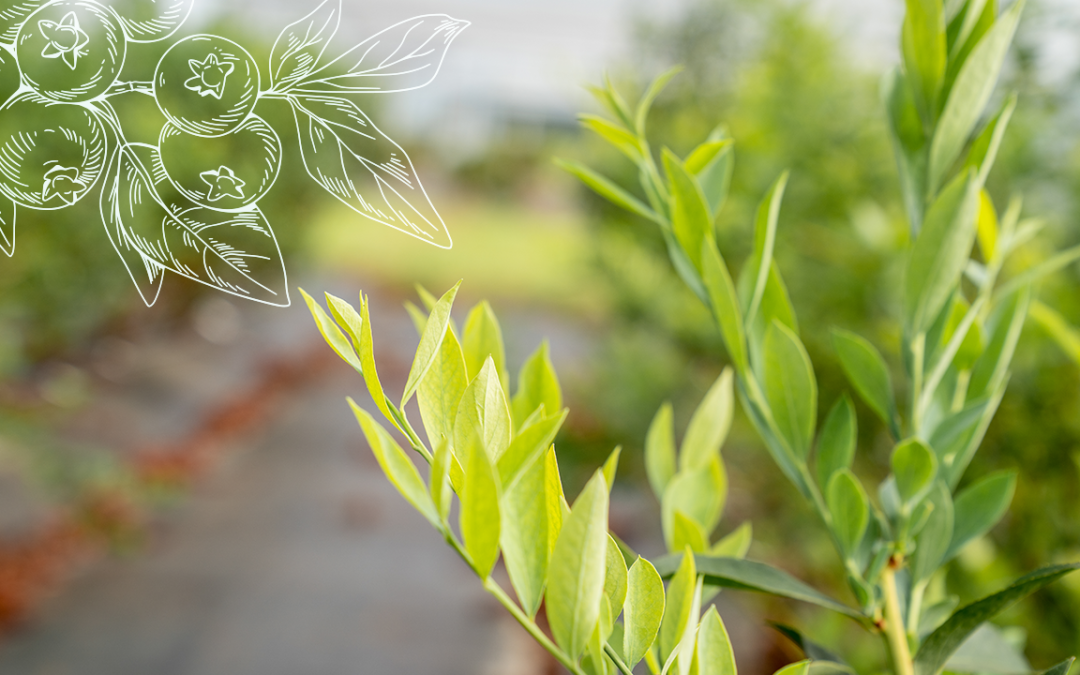
Blueberries, a superfood rich in antioxidants, vitamins, and essential nutrients, are widely celebrated during July for National Blueberry Month. Recognizing the potential within these small yet mighty fruits, researchers at Auburn University work to promote the positive health benefits of blueberries.
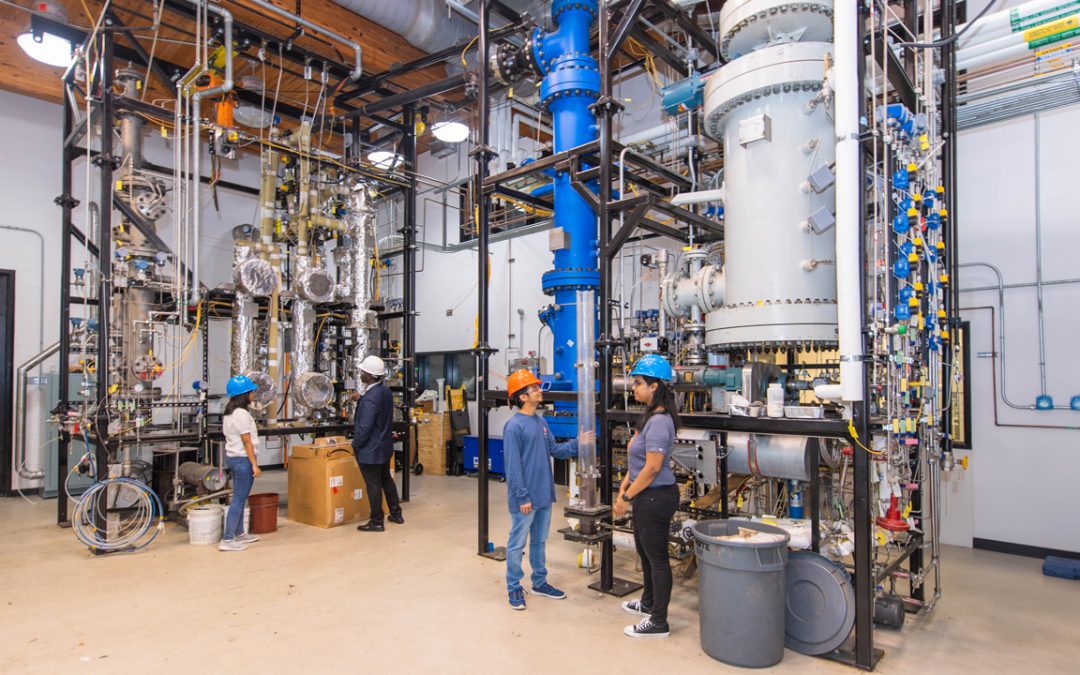
For researchers studying environmentally friendly farming practices, biochar is a game-changer.
Biochar, a charcoal-like substance created by heating plant waste, is a groundbreaking innovation in the field of sustainable farming. It is beneficial for improving soil quality, recycling organic plant material and capturing greenhouse gas emissions from the agricultural industry.
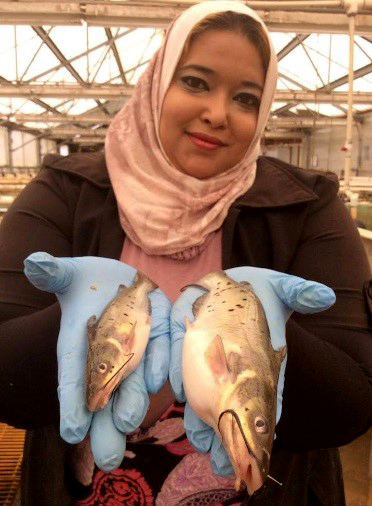
The award recognizes Youssef’s abstract, “Effect of combined transgenic channel catfish Ictalurus punctatus growth hormone (GH) and their siblings on growth rate of channel catfish in earthen ponds,” which summarizes her research on the growth performance of male and female transgenic channel catfish growth hormone (GH) cDNA and their full siblings in earthen ponds at different ages.
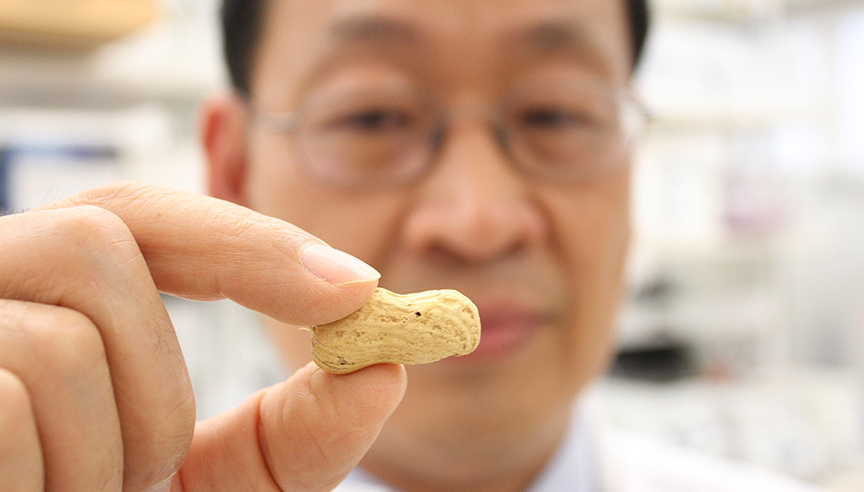
Auburn University might be relatively new to the peanut breeding business, but its just-released runner peanut variety is already winning accolades for its high yields, resistance to disease and healthy traits. The new release is the product of a peanut breeding program operated jointly by the Department of Crop, Soil and Environmental Sciences and USDA’s National Peanut Research Lab.
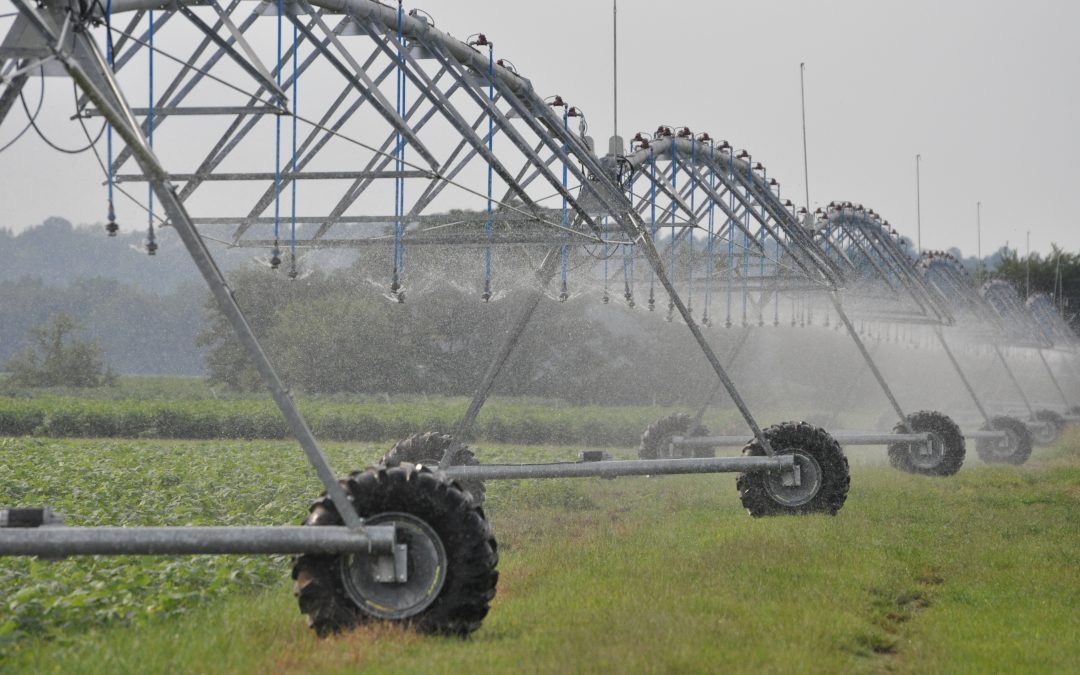
In Alabama, farmers often say that, during the summer, they’re always 10 days away from being in a drought. So this past year, when some parts of the state went for more than 70 consecutive days without measurable rainfall, many—including farmers, municipalities and others who rely on a plentiful water supply—were unprepared.
Austin Hagan, professor in the Department of Entomology and Plant Pathology and Alabama Extension plant pathologist, will discuss the results of a two-year study on developing integrated strategies for managing target spot in cotton in a webinar scheduled for Monday,...
The Alabama Precision Agriculture Extension Program will be presenting several precision agriculture workshops in 2017. The following are topics and other information about the programs. Use of Soil Sensors for Irrigation Scheduling. This workshop will discuss the...

Auburn University is joining forces with the world’s leading sports turf consultancy to initiate research and development programs throughout the U.S. sports surface market. The agreement with the STRI Group will focus primarily on expanding the U.S. soccer industry, as well as conducting surfaces research in other sports including golf, football, baseball and equestrian.
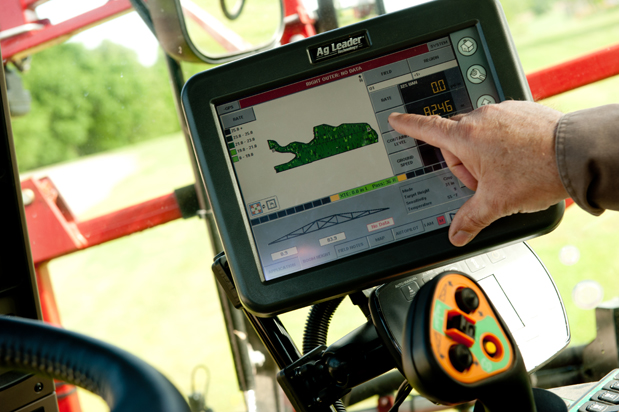
How big is data in U.S. agriculture? Consider that one acre of corn can generate seven gigabytes of data. With approximately 93 million acres of the crop currently in production, that’s 145 million DVDs filled with information—from just one crop.
by MAGGIE SMITH Christy Bratcher always knew she wanted a career that involved working with animals. However, being a veterinarian didn’t seem like the right fit. Bratcher, now an associate professor in the Department of Animal Sciences, knows she has found her home...
Henry Fadamiro has been tapped to serve as associate dean for research in Auburn University’s College of Agriculture and as associate director of the Alabama Agricultural Experiment Station, effective Jan. 1, 2017. He has served as the college’s assistant dean and...
The Auburn University College of Agriculture and Alabama Agricultural Experiment Station have announced their 2016 Faculty and Staff Award winners, all of whom will be formally recognized in a college/AAES awards ceremony in February. The faculty awards and their 2016...
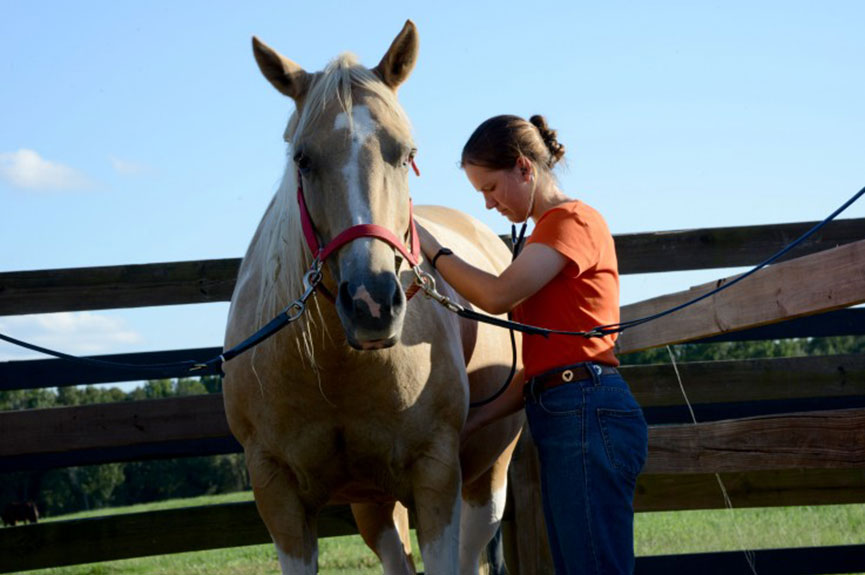
Alabama’s horse industry continues to have a substantial impact on the state’s bottom line, pumping an estimated $2.08 billion annually into the Alabama economy and contributing, both directly and indirectly, to about 24,000 jobs that represent $706 million in total labor income.
by PAUL HOLLIS Auburn University research aimed at minimizing a deadly disease in catfish has, in a short time, prompted Alabama catfish producers to significantly change what they feed their fish. In the study they launched in 2015, researchers are examining whether...
Faculty and staff are invited to participate in a research study with the Department of Agricultural Economics and Rural Sociology to understand food choice, expected consumption of food products and investment decisions. Any person over 19 and not a student is...

The Miller Center will support programming and activities of Auburn’s Department of Poultry Science and the National Poultry Technology Center. Poultry is Alabama’s leading agricultural commodity, with a $15 billion economic impact. And Alabama is one of the country’s leading poultry-producing states.
by PAUL HOLLIS The cost of food waste in America is estimated at a staggering $160 billion annually, with some reports stating that U.S. producers and consumers together waste more than 30 percent of our total food supply. Exploring some of the reasons for this...
by Joyce Tredaway Ducar The best yields I ever made in wheat averaged 107 bushels per acre, and they were made when I did just a few things differently than in the previous year. First, I controlled my weeds, particularly ryegrass. We have many options to use these...
National Poultry Technology Center The ever‐evolving modern poultry house has gained numerous energy efficiencies over the last few years. Improvements in tightening techniques and insulation technology and in ventilation systems, control systems, lighting and...
Auburn University’s Ag Heritage Park is the place to be on homecoming Saturday, Oct. 1, as the Auburn Agricultural Alumni Association and the College of Agriculture present the 2016 Fall Roundup and Taste of Alabama Agriculture. A homecoming pregame tradition, Ag...
Researchers with Alabama Cooperative Extension System (ACES) and Auburn University are conducting a statewide voluntary survey to determine the reach of a disease affecting loropetalum plants in nurseries. It's the first step in a farm bill-funded research...
by PAUL HOLLIS Long-term climate change combined with climate variability influenced by El Niño and La Niña phases of ENSO are having a significant impact on corn yields in Alabama, according to a study co-authored by Auburn University researcher Brenda Ortiz. “If we...
by PAUL HOLLIS Promising new herbicide technology could give Alabama farmers a powerful weapon in their battle against pigheaded pigweed, but growers must be alert to the chemicals’ negative impact on nearby crops. The new herbicide-resistance systems—a key topic...

The award recognizes Youssef’s abstract, “Effect of combined transgenic channel catfish Ictalurus punctatus growth hormone (GH) and their siblings on growth rate of channel catfish in earthen ponds,” which summarizes her research on the growth performance of male and female transgenic channel catfish growth hormone (GH) cDNA and their full siblings in earthen ponds at different ages.

Auburn University might be relatively new to the peanut breeding business, but its just-released runner peanut variety is already winning accolades for its high yields, resistance to disease and healthy traits. The new release is the product of a peanut breeding program operated jointly by the Department of Crop, Soil and Environmental Sciences and USDA’s National Peanut Research Lab.

In Alabama, farmers often say that, during the summer, they’re always 10 days away from being in a drought. So this past year, when some parts of the state went for more than 70 consecutive days without measurable rainfall, many—including farmers, municipalities and others who rely on a plentiful water supply—were unprepared.
Austin Hagan, professor in the Department of Entomology and Plant Pathology and Alabama Extension plant pathologist, will discuss the results of a two-year study on developing integrated strategies for managing target spot in cotton in a webinar scheduled for Monday,...
The Alabama Precision Agriculture Extension Program will be presenting several precision agriculture workshops in 2017. The following are topics and other information about the programs. Use of Soil Sensors for Irrigation Scheduling. This workshop will discuss the...

Auburn University is joining forces with the world’s leading sports turf consultancy to initiate research and development programs throughout the U.S. sports surface market. The agreement with the STRI Group will focus primarily on expanding the U.S. soccer industry, as well as conducting surfaces research in other sports including golf, football, baseball and equestrian.

How big is data in U.S. agriculture? Consider that one acre of corn can generate seven gigabytes of data. With approximately 93 million acres of the crop currently in production, that’s 145 million DVDs filled with information—from just one crop.
by MAGGIE SMITH Christy Bratcher always knew she wanted a career that involved working with animals. However, being a veterinarian didn’t seem like the right fit. Bratcher, now an associate professor in the Department of Animal Sciences, knows she has found her home...
Henry Fadamiro has been tapped to serve as associate dean for research in Auburn University’s College of Agriculture and as associate director of the Alabama Agricultural Experiment Station, effective Jan. 1, 2017. He has served as the college’s assistant dean and...
The Auburn University College of Agriculture and Alabama Agricultural Experiment Station have announced their 2016 Faculty and Staff Award winners, all of whom will be formally recognized in a college/AAES awards ceremony in February. The faculty awards and their 2016...

Alabama’s horse industry continues to have a substantial impact on the state’s bottom line, pumping an estimated $2.08 billion annually into the Alabama economy and contributing, both directly and indirectly, to about 24,000 jobs that represent $706 million in total labor income.
by PAUL HOLLIS Auburn University research aimed at minimizing a deadly disease in catfish has, in a short time, prompted Alabama catfish producers to significantly change what they feed their fish. In the study they launched in 2015, researchers are examining whether...
Faculty and staff are invited to participate in a research study with the Department of Agricultural Economics and Rural Sociology to understand food choice, expected consumption of food products and investment decisions. Any person over 19 and not a student is...

The Miller Center will support programming and activities of Auburn’s Department of Poultry Science and the National Poultry Technology Center. Poultry is Alabama’s leading agricultural commodity, with a $15 billion economic impact. And Alabama is one of the country’s leading poultry-producing states.
by PAUL HOLLIS The cost of food waste in America is estimated at a staggering $160 billion annually, with some reports stating that U.S. producers and consumers together waste more than 30 percent of our total food supply. Exploring some of the reasons for this...
by Joyce Tredaway Ducar The best yields I ever made in wheat averaged 107 bushels per acre, and they were made when I did just a few things differently than in the previous year. First, I controlled my weeds, particularly ryegrass. We have many options to use these...
National Poultry Technology Center The ever‐evolving modern poultry house has gained numerous energy efficiencies over the last few years. Improvements in tightening techniques and insulation technology and in ventilation systems, control systems, lighting and...
Auburn University’s Ag Heritage Park is the place to be on homecoming Saturday, Oct. 1, as the Auburn Agricultural Alumni Association and the College of Agriculture present the 2016 Fall Roundup and Taste of Alabama Agriculture. A homecoming pregame tradition, Ag...
Researchers with Alabama Cooperative Extension System (ACES) and Auburn University are conducting a statewide voluntary survey to determine the reach of a disease affecting loropetalum plants in nurseries. It's the first step in a farm bill-funded research...
by PAUL HOLLIS Long-term climate change combined with climate variability influenced by El Niño and La Niña phases of ENSO are having a significant impact on corn yields in Alabama, according to a study co-authored by Auburn University researcher Brenda Ortiz. “If we...
by PAUL HOLLIS Promising new herbicide technology could give Alabama farmers a powerful weapon in their battle against pigheaded pigweed, but growers must be alert to the chemicals’ negative impact on nearby crops. The new herbicide-resistance systems—a key topic...